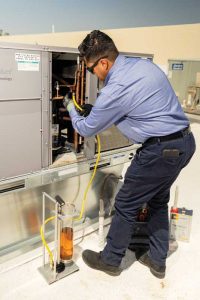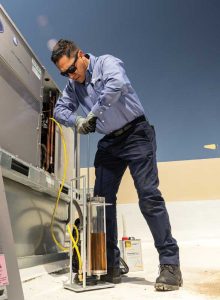
Specific performance tested additives can reclaim 10 to 20 percent HVAC energy efficiency gains, and when coupled with extended equipment life, reduced maintenance, and deferred capital expenditures, operational savings can exceed 20 percent. Facilities personnel can achieve their goals of energy savings, operational cost savings, and extended equipment life that benefit capital budget plans as well.
The market perception of refrigerant and refrigerant oils
In the first few decades since the development of efficiency-improving formulations for refrigerants and refrigerant oils, the market has had mixed experiences with relatively poor adoption rates. Early attempts using solvents that degraded oil or formulations and included solids that negatively impacted expansion valves led to a persistent perception of “snake oil.” However, today, given advances in material science, the market is more receptive to newer technologies, moving away from the unproven formulations of the past. Trust is now earned by companies that offer professionally validated products with warranties.
Selecting the best materials
When looking to adapt new technology for an HVAC refrigerant system to reduce energy consumption and contribute to decarbonization, it is crucial to conduct proper due diligence and demand validated efficiency improvements. It is important to ensure the formulation of the technology is compatible with the specific equipment, refrigerant, and refrigerant oil. Despite that, many sales agents may not disclose or have knowledge of their respective chemistry, and most HVAC equipment managers are not chemists themselves, making assessments even more challenging. Therefore, it is advisable to seek credentialed validations and testing. Look for products that have been evaluated against American National Standards Institute (ANSI) standard compatibility tests and performance validated to ASHRAE or other accepted industry standards. By taking these steps, industry professionals can make informed decisions and select the most suitable technology for an HVAC system.
 Conclusion
Conclusion
As the push for decarbonization continues to gain momentum, it is essential that facility managers take a closer look at the role HVAC systems play in emissions and energy consumption. By leveraging new technologies, they can improve the efficiency and sustainability of their buildings while also saving money in the process.
 Author
Author




